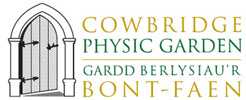What is a Physic Garden
The tradition of physic gardens stretches back a number of centuries; in Britain, the first to be established was the University of Oxford Botanic Garden, founded in 1621.
Known originally as “apothecaries gardens”, many monasteries and large estate mansions had physic gardens where plants were grown for cooking, healing and dyeing wool and fabric. They were also known as kitchen gardens or potagers (in French: jardin potager).
One of the most famous is the Chelsea Physic Garden, planted just a few years after the Oxford Botanic Garden. It was regarded as the most richly stocked garden in the world and had a flourishing seed exchange programme. It is reputed to have been responsible for providing the first cotton seeds to the American southern state of Georgia that grew into vast cotton plantations.
Plants have been a source of healing and nutrition for centuries; we have monasteries from the Middle Ages to thank for many of the medicinal remedies that must have originally been based on trial and error. Plants such as sage, rosemary, mint, thyme and borage were grown in the infirmary garden of monasteries and used to prepare ointments, cordials, infusions and purgatives for the treatment of the monks themselves and the local people in the vicinity. Today, we still rely on the curative properties of plants in over 50% of our medicines.
Visitors may be surprised to see what they may consider to be “weeds” thriving in the garden – but plants such as dandelions and thistles are regarded as important in medical herbalism, and deserve their place in any physic garden, together with the more “romantic” plants such as mkeadowsweet, lemon balm and comfrey.
The Cowbridge Physic Garden is laid out in line with traditional physic gardens, where plants and herbs are grouped together in relation to their healing/soothing properties to different parts of the body or medical conditions. The planting has also taken history into consideration; all the plants in the Cowbridge Physic Garden were to be found in Britain before 1800.
Take a look at this Education Poster for more information.

